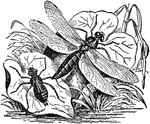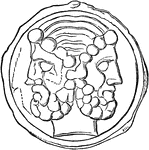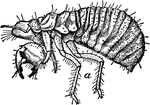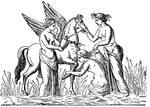Clipart tagged: ‘Nymph’

Boreas and Orithyia
"Boreas loved the nymph Orithyia, and tried to play the lover's part, but met with poor success." —Bulfinch,…

Dragon Fly and Nymph
An illustration of a dragon fly (right) and a nymph (left). A dragonfly is a type of insect belonging…

Dragon-fly
An insect with four large transparent wings, that are net-veined. They are abundant in ponds and still…

Leaf Bug and Plant Bug
Illustrated are nymphs of the four-lined leaf bug and the adult of the tarnished plant bug. The small…

Ondine
Ondines or undines are elementals, enumerated as the water elementals in works of alchemy by Paracelsus.…




